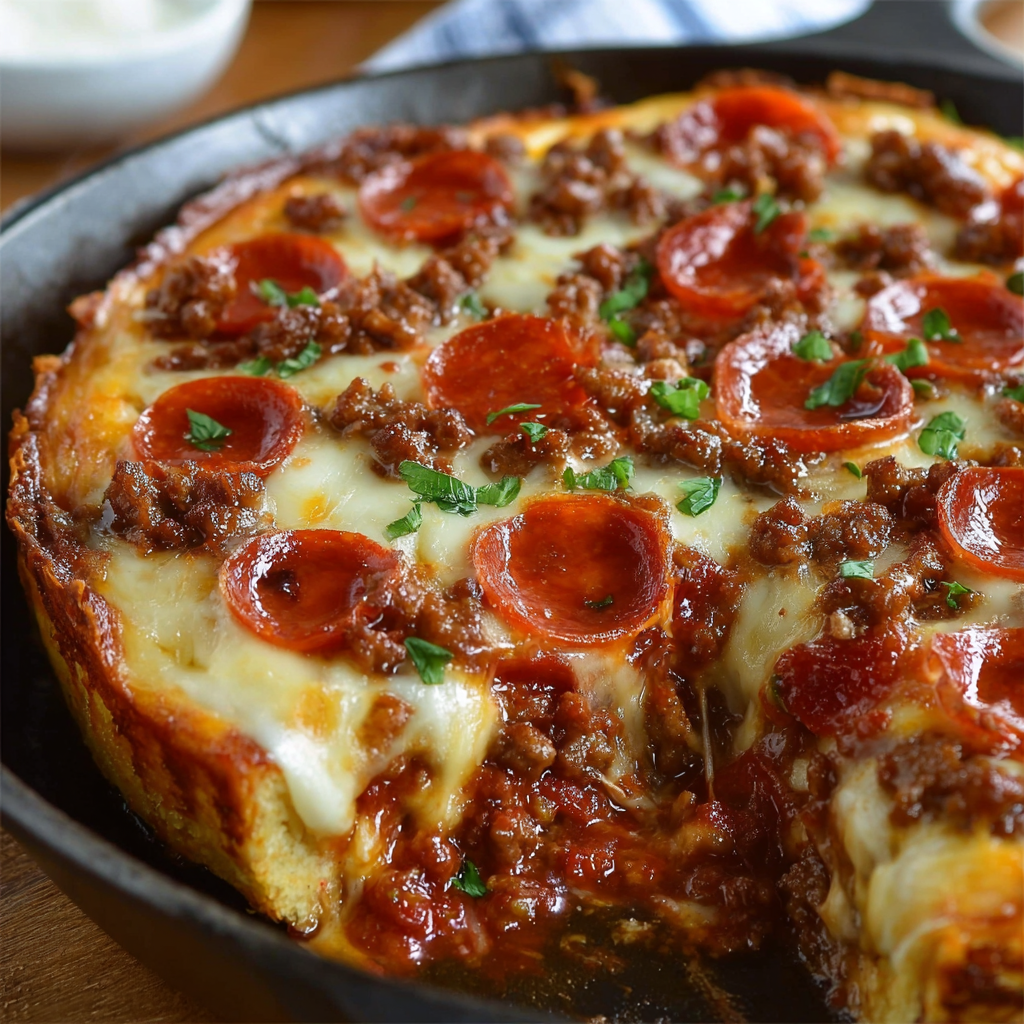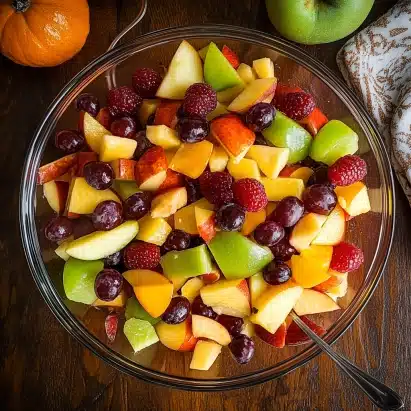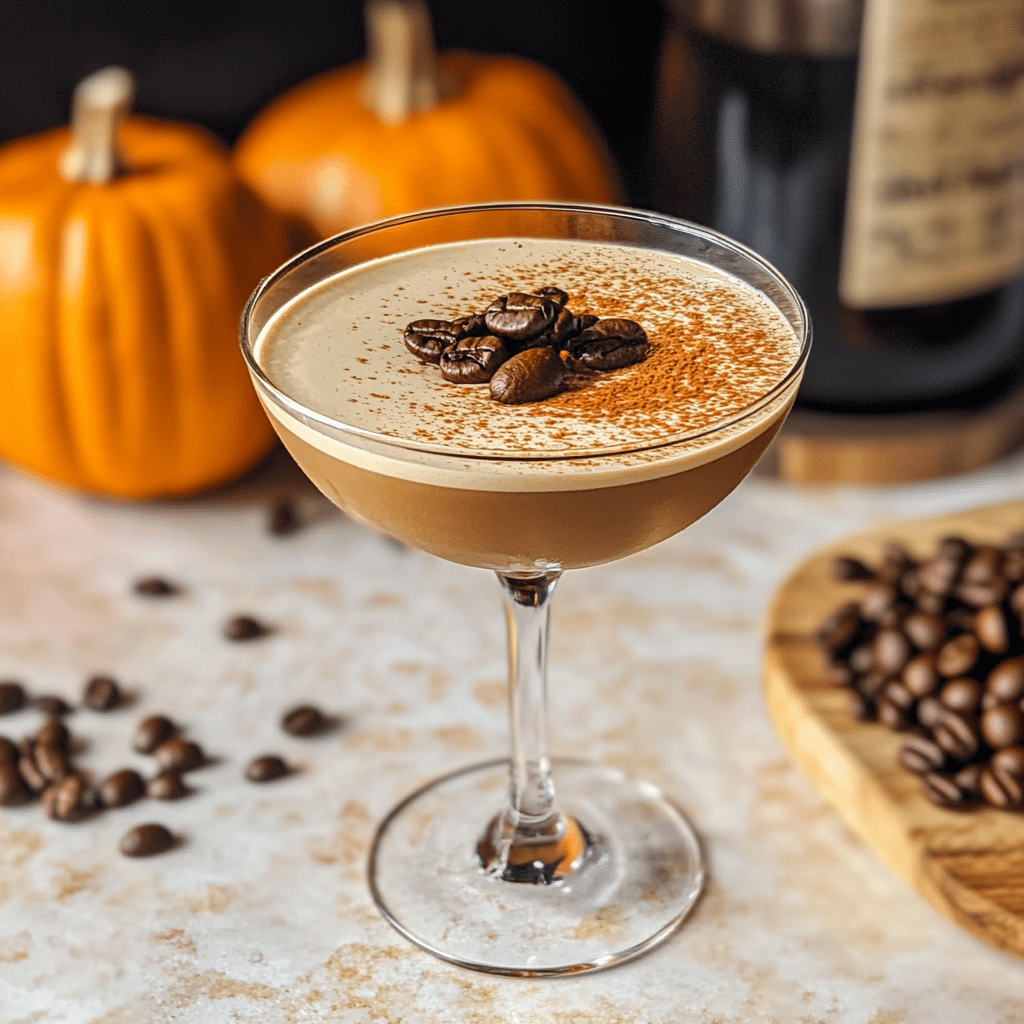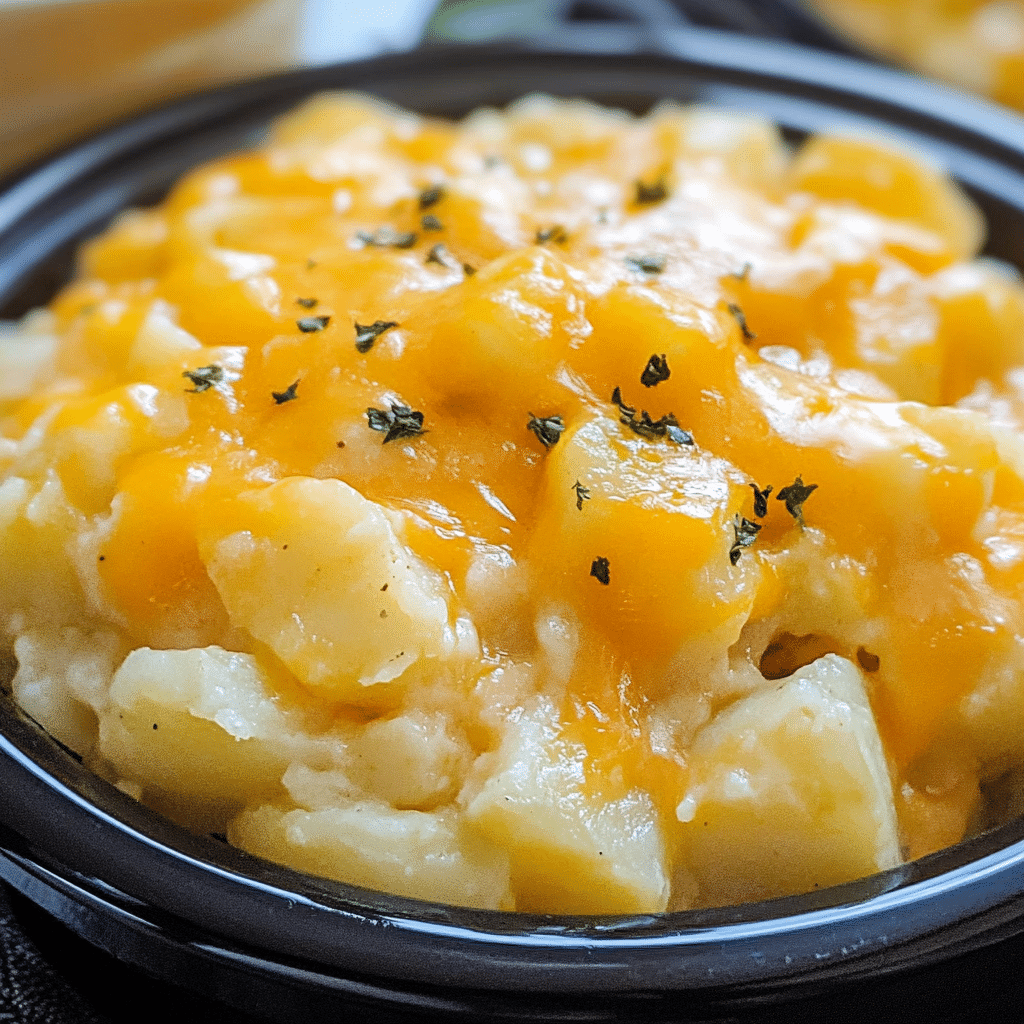Raspberry and pistachio tiramisu is what happens when an Italian classic meets a fresh, modern twist.
Instead of the usual layers of coffee-soaked biscuits and cocoa, this version brings in juicy raspberries, fragrant pistachios, and a silky mascarpone cream that feels luxurious but wonderfully light on the tongue. Every bite is a contrast of flavors and textures: tart berries, nutty crunch, tender ladyfingers, and velvety cream.
It’s the kind of dessert that looks like it came straight from a patisserie window, yet it’s surprisingly achievable in a home kitchen.
There’s no baking involved, no complicated techniques—just soaking, layering, and a bit of patience while the tiramisu rests in the fridge and transforms into something magical.
This tiramisu is perfect for:
- Summer dinners when you crave something creamy but not heavy
- Romantic evenings, birthdays, and festive gatherings
- Moments when you want a show-stopping dessert you can prepare ahead of time
Once you make it, you’ll see why raspberry and pistachio is such a winning combination. The berries brighten the mascarpone and cut through the richness; the pistachios add depth, aroma, and a beautiful green accent that looks stunning beside the ruby-red fruit.
What Makes This Raspberry and Pistachio Tiramisu Special?
Classic tiramisu relies on strong espresso and cocoa for its signature flavor. This version keeps the spirit of the original—layers of soaked biscuits and soft cream—but swaps in:
- A fruity heart – Instead of just coffee, you get a stripe of tangy raspberry compote and fresh berries that bring brightness and juiciness.
- Nutty complexity – Ground pistachios and/or pistachio paste are folded into the mascarpone cream, giving it a delicate nuttiness and a pale green hue.
- A lighter, more refreshing character – Without heavy coffee notes, this tiramisu feels lighter and more suitable for warm weather, brunch, or afternoon tea.
- A stunning presentation – The contrast of white cream, red raspberries, and green pistachios makes every slice look like a little piece of edible art.
At its core, though, the dessert still behaves like tiramisu: the ladyfingers soften into a tender, cake-like base; the mascarpone cream sets into a smooth, custardy layer; and everything melds into one harmonious, spoonable dessert that’s best enjoyed chilled.
Core Ingredients for Raspberry and Pistachio Tiramisu
To create this tiramisu, you’ll build three components: a raspberry layer, a pistachio mascarpone cream, and a simple soaking mixture for the ladyfingers.
For the Raspberry Layer
- 2 ½ cups (about 300 g) raspberries – Fresh or frozen. Fresh are ideal for decorating the top; frozen are perfect for cooking into the compote.
- 3–4 tablespoons granulated sugar – Adjust depending on how tart your berries are.
- 2 tablespoons raspberry jam or preserves (optional) – Intensifies the raspberry flavor and thickens the compote slightly.
- 1–2 teaspoons lemon juice – Brightens the fruit and balances the sweetness.
- 1 teaspoon cornstarch mixed with 1 tablespoon cold water (optional) – Use if you want a thicker raspberry layer that won’t seep too much into the biscuits.
For the Pistachio Mascarpone Cream
This cream is the soul of the tiramisu—rich, silky, and gently flavored with pistachios.
- 16 oz (450–500 g) mascarpone cheese – Chilled but slightly softened for easy mixing.
- 1 ⅔ cups (400 ml) heavy cream or whipping cream – Very cold, so it whips up quickly.
- ½ cup (60 g) powdered sugar, sifted – Provides smooth sweetness.
- ¼–⅓ cup (30–40 g) finely ground pistachios or 3–4 tablespoons pistachio paste – For intense pistachio flavor.
- 1 teaspoon vanilla extract – Rounds out the flavor.
- Pinch of fine salt – Just enough to accent the sweetness and nuts.
Tip: If your pistachio paste is unsweetened and very intense, taste the cream and add 1–2 extra tablespoons of powdered sugar if needed.
For the Ladyfingers & Soaking Mixture
- 7–8 oz (200–250 g) ladyfingers (Savoiardi) – Use the firm, dry kind meant for tiramisu.
- 1 ¼ cups (300 ml) milk – Dairy or unsweetened almond milk both work well.
- ¼ cup (60 ml) raspberry juice, berry nectar, or water – Adds a hint of berry flavor and color.
- 2 tablespoons sugar or honey – To lightly sweeten the soak.
- ½ teaspoon vanilla extract – For aroma.
- 1–2 tablespoons very finely chopped pistachios or 1 tablespoon pistachio paste (optional) – To echo the pistachio flavor in the cream.
For the Topping
- 2–3 tablespoons unsweetened cocoa powder – A nod to classic tiramisu.
- ¼–⅓ cup (30–40 g) chopped pistachios – For crunch and color.
- Fresh raspberries – Enough to generously decorate the top.
- Chocolate curls, shavings, or dark chocolate chips (optional) – Adds a bittersweet contrast.
Step-by-Step
Guide to Making Raspberry and Pistachio TiramisuThe process is straightforward: cook the berries, mix the cream, soak the ladyfingers, and layer everything. Here’s how to do it in a calm, organized way.
Step 1: Make the Raspberry Layer
- Cook the berries
Add the raspberries and sugar to a small saucepan. If you’re using frozen raspberries, there’s no need to thaw them first. Place the pan over medium heat. As the berries warm, they’ll start releasing juice. - Add lemon and jam
Stir in the lemon juice and raspberry jam (if using). The jam enriches the raspberry flavor and helps create a slightly thicker texture. - Simmer until juicy
Let the mixture simmer for about 5–7 minutes, stirring occasionally. The berries will soften and collapse, and the liquid will deepen in color and flavor. - Thicken if desired
If you want a more jam-like consistency, stir in the cornstarch slurry (cornstarch + water) while the mixture is gently simmering. Cook for another 1–2 minutes, until it lightly thickens. It should coat the back of a spoon. - Cool completely
Remove from the heat and transfer the raspberry mixture to a bowl or shallow dish. Let it cool to room temperature. You don’t want hot compote melting your mascarpone cream later. - Reserve fresh berries
Keep some fresh raspberries aside (un-cooked) for layering and decorating the top.
Step 2: Prepare the Pistachio Mascarpone Cream
- Whip the cream
Pour the very cold heavy cream into a large, clean bowl. Using an electric mixer, whip it until soft peaks form—thick and airy, but still smooth and spreadable. Don’t go all the way to stiff peaks; you want it to blend easily with the mascarpone. Set aside. - Mix mascarpone, sugar, and flavorings
In another bowl, add the mascarpone, powdered sugar, vanilla, and a pinch of salt. Beat on low to medium speed just until smooth. You’re not trying to whip air into it, just to dissolve the sugar and create a uniform mixture. - Add pistachios
Stir in the finely ground pistachios or pistachio paste. If you’re using ground nuts, your cream will have a delicate speckled look and a subtle nuttiness. Pistachio paste will give a stronger, more concentrated flavor and sometimes a light green tint. - Fold in the whipped cream
Add the whipped cream to the mascarpone mixture in two or three additions. Using a spatula, fold gently by scooping from the bottom of the bowl and turning the mixture over itself. This keeps the cream light and airy. When you’re done, you should have a thick, mousse-like pistachio cream that holds its shape but feels soft. - Taste and adjust
Taste a spoonful. If you want it a little sweeter, add another tablespoon or two of powdered sugar and fold again. If it feels too firm, you can loosen it with 1–2 tablespoons of cold milk, folded in gently.
Step 3: Prepare the Soaking Mixture for the Ladyfingers
- Combine liquids and sugar
In a shallow bowl or dish, whisk together the milk, raspberry juice (or water), sugar or honey, and vanilla. - Add pistachios or paste (optional)
If you like the idea of a faint pistachio note running through the biscuits, whisk in finely chopped pistachios or pistachio paste. The mixture should still be fairly smooth and fluid. - Taste and balance
Take a quick sip. The soak should be lightly sweet, with gentle berry and vanilla notes. Remember, the ladyfingers and creams are already rich and sweet, so you don’t need a very sugary liquid.
Step 4: Assemble the Tiramisu
You’ll need a rectangular dish, roughly 8×10 inches (20×25 cm), or a similar volume. A glass dish is nice because you can see the layers.
- First layer of ladyfingers
Working with one ladyfinger at a time, dip it into the soaking mixture for about 1–2 seconds per side. It should absorb some liquid but not become soggy. Arrange the soaked biscuits in a tight single layer on the bottom of your dish. If needed, break a few in half to fill gaps. - First layer of pistachio cream
Spread about half of the pistachio mascarpone cream over the ladyfingers. Use a spatula to smooth it into an even layer, making sure to get all the way to the corners. - Raspberry layer
Spoon the cooled raspberry compote over the pistachio cream. You can spread it fully, or dollop it on in thick stripes and gently swirl it with the tip of a knife or spatula to create a marbled effect. Tuck in some fresh raspberries here and there for bursts of juicy texture. - Second layer of ladyfingers
Dip the remaining ladyfingers in the soaking mixture and arrange them on top of the raspberries, forming a second biscuit layer. - Final layer of pistachio cream
Spread the rest of the pistachio mascarpone cream over the second layer of ladyfingers. Smooth the top as neatly as you can—this will be the surface you decorate before serving. - Cover and chill
Cover the tiramisu tightly with plastic wrap or a lid and refrigerate for at least 4 hours, preferably overnight. During this time, the ladyfingers soften, the flavors meld, and the dessert sets into clean, sliceable layers.
Step 5: Finishing and Decorating
- Dust with cocoa
Just before serving, use a small sieve to dust the top with a light layer of unsweetened cocoa powder. This adds a whisper of bitterness and ties the dessert visually to classic tiramisu. - Add pistachios and raspberries
Scatter chopped pistachios over the cocoa-dusted surface, then arrange fresh raspberries on top. You can create neat rows, clusters, or a more natural scattered look—whatever style you like. - Optional chocolate garnish
For extra elegance, add chocolate curls, shavings, or a few dark chocolate chips. The bittersweet chocolate complements both the pistachios and the raspberries beautifully. - Slice and serve
Use a sharp knife to cut the tiramisu into squares or rectangles. Wipe the knife between cuts for clean edges. Serve chilled and enjoy the layers of flavor in each bite.
Flavor Variations and Creative Twists
Once you’ve mastered the basic recipe, it’s easy to adapt it to your taste or to the season. Here are some ideas:
1. Lemon-Raspberry Pistachio Tiramisu
Add finely grated zest of 1–2 lemons to the mascarpone cream, and a little extra lemon juice to the raspberry compote. The result is brighter, more citrusy, and especially refreshing in spring and summer.
2. Rose & Pistachio Tiramisu
For a Middle Eastern-inspired twist, add ½–1 teaspoon of rose water to the raspberry compote and a few drops to the cream. Use a light hand—rose water is strong. Decorate with crushed pistachios and a few edible dried rose petals.
3. Mixed Berry Tiramisu
Replace some of the raspberries with blueberries, blackberries, or sliced strawberries. Cook them together into the compote or layer them fresh. You’ll get a beautiful mix of textures and colors.
4. Chocolate-Pistachio Tiramisu with Raspberries
Add 2–3 tablespoons of cocoa powder to the mascarpone cream to create a chocolate-pistachio mousse. Use the same raspberry layer and top with dark chocolate shavings. This version is richer and ideal for chocolate lovers.
5. Individual Dessert Cups
Instead of assembling in a large dish, layer the components in small glasses or jars:
- A few pieces of soaked ladyfinger
- A dollop of pistachio cream
- A spoonful of raspberry compote
- Repeat until the glass is full
Top with cocoa, pistachios, and a single raspberry. These individual portions are perfect for parties and make serving incredibly easy.
How to Serve Raspberry and Pistachio Tiramisu
This dessert shines in many settings:
- After a special dinner – Its creamy yet fruity profile makes it a satisfying but not heavy finale.
- For celebrations – Birthdays, anniversaries, or festive holidays where a big, shared dessert feels right.
- At brunch – Because it doesn’t contain strong coffee or alcohol by default, it’s gentle enough to serve alongside a late-morning spread.
Serve it cold, directly from the fridge, when the cream is set and the biscuits have fully softened. A small square on a plate with a few extra berries and a sprinkle of pistachios instantly looks restaurant-worthy.
Tips & Tricks for Perfect Tiramisu
- Don’t oversoak the ladyfingers.
A quick dip is all you need. If they sit too long in the liquid, they’ll disintegrate and the dessert can become soggy. - Keep the cream cold and stable.
Use cold cream and don’t overbeat the mascarpone. Overworking mascarpone can make it grainy. If your kitchen is warm, chill your mixing bowl and beaters first. - Let it rest long enough.
Give the tiramisu at least 4 hours in the fridge—overnight is ideal. The texture and flavor are noticeably better when it’s had enough time to set. - Balance sweetness and tartness.
Taste each component as you go: the raspberry layer, the cream, and the soaking mixture. Adjust sugar or lemon juice so nothing feels cloying. You want the dessert to be sweet but lifted by the berries and pistachios. - Use good-quality pistachios.
Fresh, unsalted pistachios with vibrant color give the best flavor. If your pistachios look dull or smell stale, they’ll bring that staleness into the dessert. - Prepare ahead for busy days.
Because tiramisu needs chilling time, it’s a dream dessert for hosts. Assemble it the day before your event, then simply decorate and serve.
Make-Ahead, Storage, and Freezing
Make-ahead:
Raspberry and pistachio tiramisu is at its best from day 1 to day 3. As it rests, the flavors harmonize and the texture becomes wonderfully creamy.
Storage:
- Cover the dish tightly with plastic wrap or a lid.
- Store in the refrigerator for up to 3 days.
- If you’ve already decorated with fresh raspberries, they may soften slightly by day 2–3 but will still taste good.
Freezing (optional):
You can freeze tiramisu, but the texture of the cream may change a bit once thawed. If you decide to freeze:
- Wrap the dish well in plastic wrap, then again in foil.
- Freeze for up to 1 month.
- Thaw overnight in the fridge before serving.
- Add fresh raspberries and a fresh dusting of cocoa on top after thawing, to refresh the look.
Frequently Asked Questions
Can I use frozen raspberries instead of fresh?
Yes. Frozen raspberries are perfect for the compote layer because they break down easily as they cook. Use them straight from the freezer and add a minute or two of extra cooking time. For decorating the top, fresh raspberries look prettier and hold their shape better, but you can use thawed berries in a pinch.
What can I use instead of ladyfingers?
If you can’t find Savoiardi biscuits, you can use:
- Thin slices of plain sponge cake or genoise
- A simple vanilla loaf cake, cut into strips
- Soft savoiardi-style biscuits from the supermarket
Just remember that softer cakes soak up liquid faster, so shorten the dipping time to avoid mushiness.
Can I add alcohol for a more traditional tiramisu vibe?
Absolutely. If you’d like a boozy note, you can:
- Stir 2–3 tablespoons of pistachio liqueur, amaretto, or a berry liqueur into the soaking mixture.
- Add 1 tablespoon of liqueur to the mascarpone cream.
If you do this, remember to label the dessert clearly and avoid serving it to children or anyone who doesn’t drink alcohol.
Is there a way to make it egg-free?
This version already skips raw eggs in the cream; the structure comes from whipped cream and mascarpone. Just be sure your ladyfingers don’t contain egg if you need the entire dessert to be egg-free—otherwise, you can bake or buy an egg-free sponge cake and use that instead.
Can I make a lighter version of this tiramisu?
You can reduce the richness slightly by:
- Replacing part of the mascarpone with full-fat Greek yogurt (start with ¼–⅓ of the mascarpone amount).
- Using a bit less sugar in the cream and raspberry compote.
- Using a lighter milk in the soaking mixture.
The result won’t be quite as decadent, but it will still be creamy, fruity, and delicious.
Why did my mascarpone cream turn grainy?
Graininess usually means the mascarpone was overbeaten or went from very cold to very warm too quickly. Next time:
- Beat the mascarpone only until smooth, on low speed.
- Make sure your heavy cream is very cold.
- Fold everything together gently by hand.
Even if the texture isn’t perfect, the dessert will still taste wonderful once it’s layered and chilled.
Raspberry and pistachio tiramisu is a dessert that feels both luxurious and comforting—something you might expect at a chic restaurant, yet totally achievable in your own kitchen with simple tools and a bit of time.











